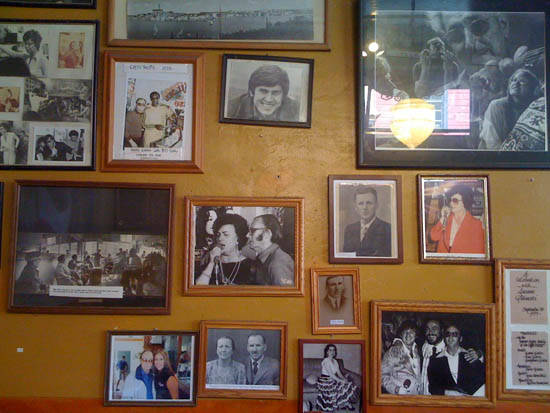A Tourist Visits Italian in California
This summer I spent the family vacation in California visiting relatives and a host of sites. Along the drive from San Diego to San Francisco I casually checked out examples of Italian America on the Pacific Coast. I encountered the full range of the cultural spectrum, from high to low, from the sublime to the ridiculous, from the historic to the fantastic.
My first notice of the Italian presence was a poster in San Diego’s Hillcrest neighborhood advertising “Ferragosto” with a “When in Rome” theme. The poster listed local entities such as the Little Italy Association, the Our Lady of Rosary Catholic Church, and Amici Park, signs that Italian had been historically mapped on the Californian landscape. Yet the event’s offer to “EXPERIENCE THE TRANSFORMATION OF AMICI PARK INTO THE ROMAN FORUM FOR A NIGHT” suggested a complicated and post-modern sense of Italian identification. The image of Saint Mother Cabrini advertising the punk band Kilslug at a music store offered a not too dissimilar estrangement to the complicated work of cultural identity. I never did make it to India Street, the city’s counterpart to New York’s Mulberry Street.
Heading north along the coast, we skirted the sprawl of Los Angeles and stopped at the Getty Villa in the city’s northern Pacific Palisades area. Oil tycoon J. Paul Getty modeled this building on the first-century Villa dei Papiri in Herculaneum to house his extensive collection of Greek, Etruscan, and Roman art. Opened in 1974 on his 64-acre property, this is a wealthy elite’s—not an immigrant’s—appropriation and reconstitution of Italy in the West. I was drawn to the esquisite mosaic work found on the East Garden fountain which was a copy of one found in Pompeii.
The Getty Museum’s problematic collection history has resulted in the Italian govenment’s successful repatriation of scores of “looted” antiquities.
I was familiar with Monterey’s rich Italian-American fishing history, so a stroll through the tourist trap that is the city’s “Old Fishermen’s Wharf” was obligatory (and a welcomed digestive after the sumptuous meal had at the Monterey Fish House). Amidst the cacophony of barking seals, I encountered statuary commemorating the Italian, and, in particular, Sicilian fishers.
The final tap on the California tour was San Francisco, where the city’s Italian is all too evident. I couldn’t help but compare North Beach with Manhattan’s Little Italy, given its historic Italian significance, its proximity to a Chinatown, and its commodification as a tourist destination. At Mission Dolores, I came upon the nineteenth-century tomb of Francesco and Petrona Ruffino.
Beniamino “Benny” Bufano’s statue of St. Francis welcomed the roaming tourists with open arms to the tacky theme park that is Fishermen’s Wharf. I got a kick from riding not the city’s quintessential cable car but one of Milan’s orange trams that runs along Market Street that I remembered fondly from my stay in that northern Italian city during the 1970s.
I returned to California last month to participate in the conference entitled, “The Watts Towers Common Ground Initiative: Art, Migrations, Development.” Organized by folklorist Luisa Del Giudice, the two-day event brought together American and Italian scholars, museum curators, art conservators, and community activists to explore the life and work of Sabato “Sam” Rodia and his lasting contribution to Los Angeles and world culture.
For me, it is this unique creation by a semi-literate, southern Italian laborer—more than A. P. Giannini’s “Bank of America” or the wineries of Napa Valley—that constitutes a testament to Italian in California and in the United States.


































i-Italy
Facebook
Google+
This work may not be reproduced, in whole or in part, without prior written permission.
Questo lavoro non può essere riprodotto, in tutto o in parte, senza permesso scritto.